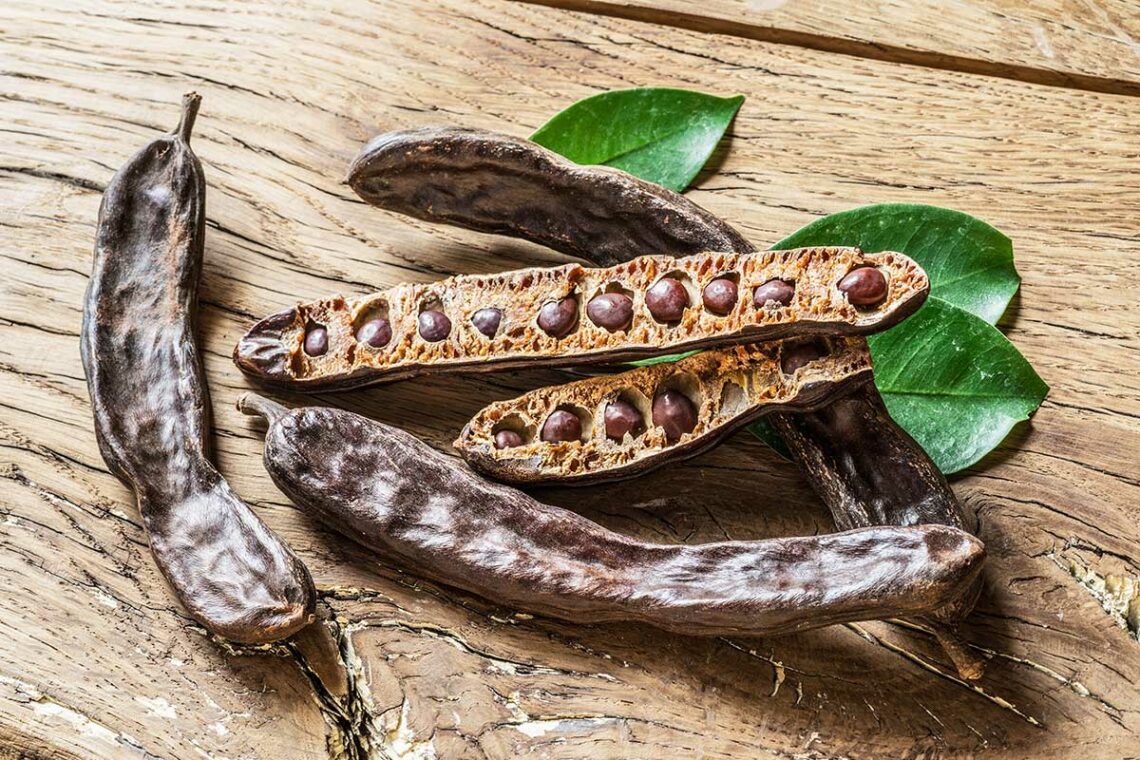Cretan Carob: 5 Beneficial Nutrition Facts
The ancient Greeks were the first to grow carob trees, and today the carob (Ceratonia siliqua) is one of Crete’s most precious treasures: the island even has Europe’s largest carob grove in the village Tris Ekklisies; however, you’ll find trees growing everywhere, even in the wild.
Carob Grove of Tris Ekklisies
If you want to see the largest natural carob grove in Europe, you must drive 64 kilometers south of Heraklion. The drive from The Syntopia will be about 130 kilometers, taking you more than two hours to reach the destination.
A part of the road leading to the carob grove is strenuous and dangerous, as the serpentines run over ten kilometers all the way from the village Paranymfi, across the wild Asterousia Mountains, to the Tris Ekklisies beach at the exit of the Ambas Gorge. The gorge provides the ideal habitat for the largest colonies of vultures in Greece and Southern Europe, including the near-threatened species of bearded vulture (Gypaetus barbatus). Birdwatchers will find the experience fascinating in this area. You should also consider making a day trip out of this adventure and take time on the beach Tris Ekklisies before exploring the grove.
The carob grove grows on the slopes of the hills stretching between the village Tris Ekklisies and Ornios beaches. Since it is hard to reach, the forest is not a tourist attraction. Instead, think of it as one of the island’s secret destinations and a unique travel experience.
Carob Health Benefits
The scientific name Ceratonia siliqua derives from the Greek kera, meaning horn, referring to the keratomorphic shape of the pods, and the Latin siliqua, which describes the pods’ hardness and shape. The carob is a legume with significant health benefits for consumption and cosmetic use. Here are five beneficial nutrition facts that make carob a superfood:
- Essential vitamins: Carob is loaded with essential vitamins, including E, D, C, Niacin, B6, and folic acid, as well as low levels of vitamins A, B2, and B12.
- Dietary fibers and minerals: Minerals in carob pods include K, Na, Ca, Mg, P, Cu, Fe, Mn, and Zn. For example, carob has twice the amount of calcium compared to cocoa. These legumes also contain dietary fiber, pectin, and proteins.
- Promote health: Studies have shown that carob can help prevent some chronic diseases due to their high antioxidants, polyphenols, and high content in fibers. In addition, carob has antidiabetic effects and antiproliferative and apoptotic activity against cancer cells. Moreover, it can treat stomach issues (including diarrhea), lower cholesterol, and reduce the risk of heart disease.
- Caffeine- and fat-free: Unlike cocoa, which contains caffeine and beta-phenylethylamine that trigger migraines in some people, carob is free of these compounds. Cocoa is also rich in sodium and fats, whereas carob has a low‐fat and low-sodium composition.
- Gluten-free: Carob is the ideal dietary choice for people with gluten intolerance, as it is naturally gluten-free. Gluten intolerance may lead to diarrhea or constipation, bloating, abdominal pain, fatigue, headaches, and nausea. Carob consumption prevents these symptoms.
Of course, like every other aliment, carob can present some side effects; however, these are usually low risk, for example, urticaria, asthma, and hay fever.
When you visit Crete, you can purchase carob pods, carob flour, syrup, pastries, and cookies made with carob, carob chocolate, carob breadsticks, carob with molasses, and many other products. Carob products are among the top things to bring back home when you shop for souvenirs on the island.





